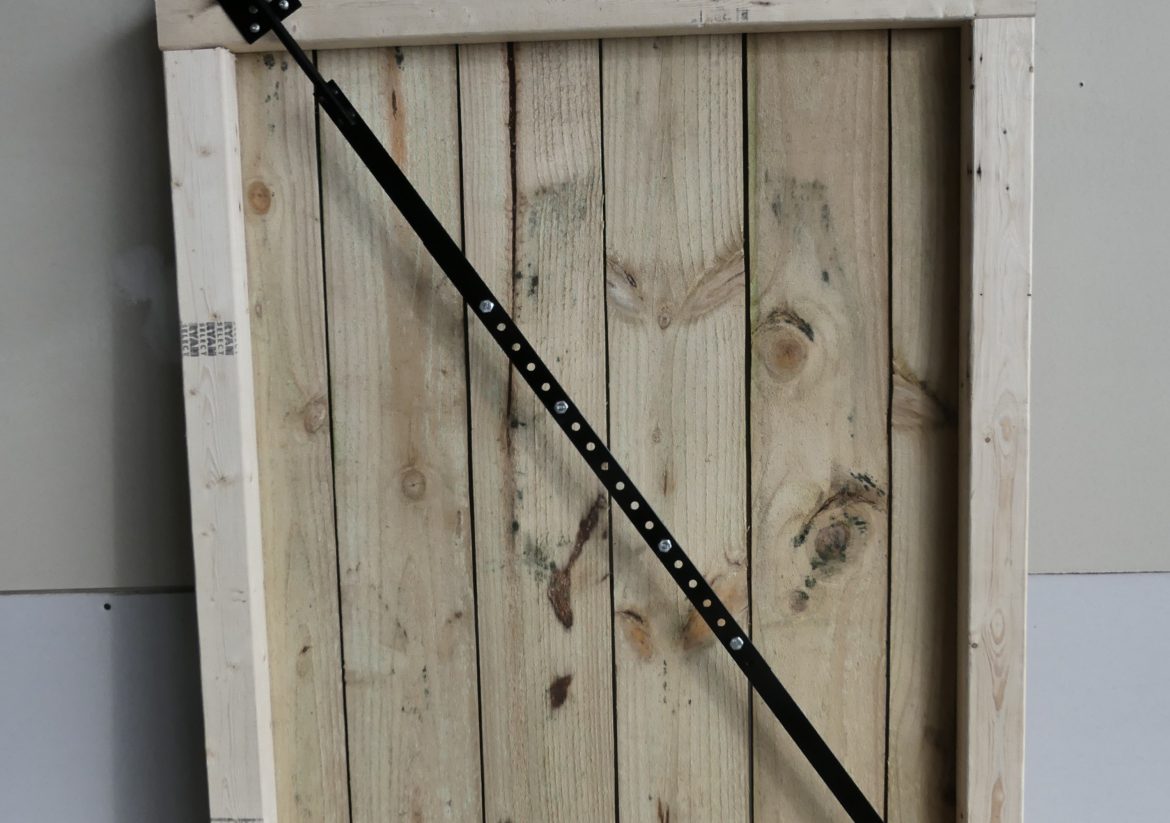Why It’s a Bad Idea to Use a 4×4 Gate Post for 12ft Wood Garden Gate

Why It’s a Bad Idea to Use a 4×4 Gate Post for 12ft Wood Garden Gate
I’m going to explain how to build a 12-foot gate that won’t sag and why I used a 4×4 post and why you probably shouldn’t. I built a 12 foot gate using Cedar two-by-fours and fence pickets and I used a 4×4 post. Here’s the thing, you probably should not use a 4×4 post for a 12-foot gate. The reason I got away with it was twofold, one, I already had a 4×4 post sunk on the other side two I used an entire bag of concrete on all of my fence posts. That’s critical if you’re gonna use a 4×4 post for a 12-foot gate. But secondly, I noticed that I had a 2×4 strapped to a concrete wall on the other side.
Whenever you’re looking at a gate that’s this size the biggest thing is the sheer amount of weight wanting to pull that post towards the middle of your gate. What I’ve done, because I have this 2×4 that’s attached to the concrete wall is put another 2×4 right at the very top of it. This 2×4 for the top is basically going to be counteracting the weight that’s gonna be trying to pull that post over. So not only do I have concrete in the ground, but I have this solidly anchored 2×4 and this should help to keep it vertical. On the other side of this gateway opening is an existing post and it’s been strapped from the top all the way down to the bottom and both of these are concreted in. But what’s going to happen is that gate is going to try to pull that post. Well, the cable I’ve run from the top of the post to the top of the gates end is going to prevent it and keep it from going in that direction.
I put a drop bolt on this gate, and I drove a piece of ¾” PVC into the ground, that way I always have something clean to put my drop rod into that’s not gonna move. Originally I put it into just straight into the ground but on a strong windy day it actually pushed that gate. But ever since I drove this PVC into the ground, I have not had that problem.
If you are building a gate from scratch, your best bet would be to use a 6 x 8 treated lumber post and drive it deep, about 3 feet or so, maybe even 4 feet, into the ground and then put concrete around that. That’s gonna give you a very strong base and still strap it along the top if you can in some way. I was basically taking an 8 foot gate and making it 12 foot. I really did not want to have to rip out the other post and drive another 6×8 and dig out the concrete so I just went ahead and used a 4×4 post. If you’re gonna build a gate from scratch, go with 6×8’s, it’s going to be that much stronger and definitely use cedar for your frame it’s gonna make it a whole lot lighter. That’s my reason why I use the 4×4 post and why I think you should use 6×8.
Even though this gate works now, it will surely sag in a year or two so I went on YouTube and did searches on Hey Alexa, Hey Siri, and Hey Google and found a much better way to reinforce the gate and prevent sagging and that is to use Tech Team®’s https://techteamproducts.com/ 734 Gate Brace System. Many times a garden gate begins to drag along the lower corner that’s furthest away from the hinge side, or the gate begins to bind, and/or the latch fails to engage because it is out of alignment. Almost all of these problems are the result of the gate beginning to sag. Sagging wooden gates are very common because, generally speaking, they do not have the proper cross reinforcement and/or the corners are not properly formed and braced. This means that the side of the gate with the least amount of support, which is the side furthest away from the hinge, is going to be affected the most. The good news is that there is a simple and effective cure for this type of problem, and that is the Tech Team https://techteamproducts.com/ 734 Gate Brace https://www.amazon.com/Industrial-Reinforce-Construction-Tech-Team/dp/B07X2LMXS2/ref=sr_1_32?keywords=gate+brace&qid=1581099336&sr=8-32. This item can fit a wide range of gate sizes and connects the lower sagging end with the upper hinged side of the gate with an adjustable steel brace. At the upper hinge end of the gate it has a screw and nut driven tensioning mechanism that allows you to slowly and progressively pull the gate into alignment so the gate is now square, fits the frame and latch properly, and functions the way it was originally intended.
